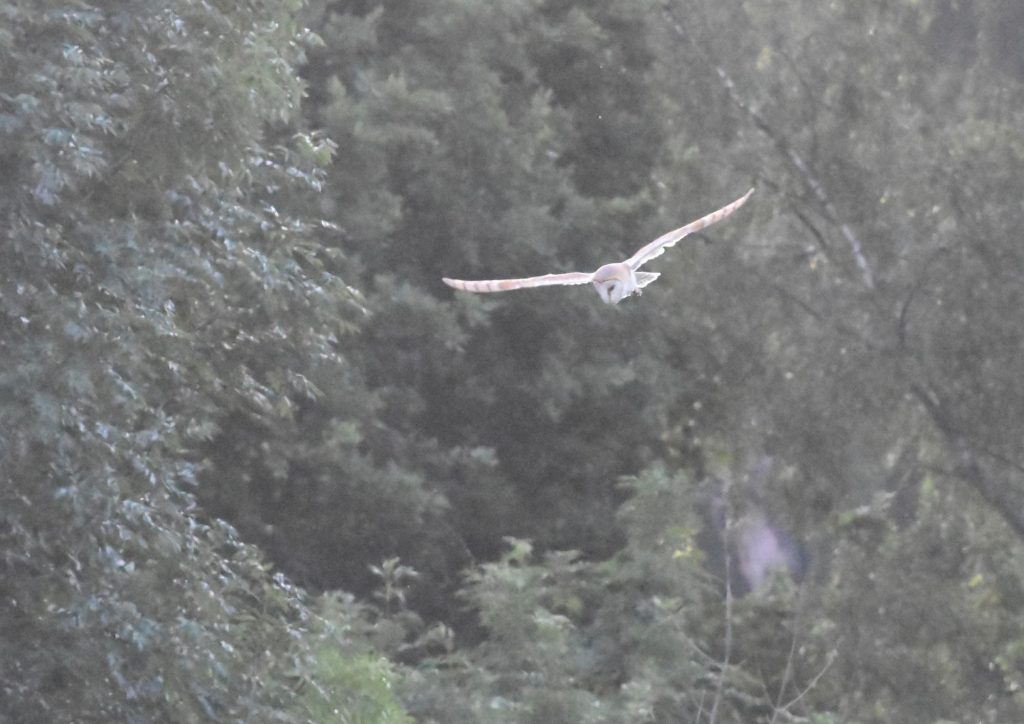First sighting of Barn owl on Hampstead Heath since 1946
‘You almost forget you are in London,’ says regular bird watcher after rare spot
Friday, 16th June 2023 — By Dan Carrier

Heath bird watcher Reuben Braddock’s picture of the barn owl taken on Tuesday evening
WITH its super-silent wings, beautiful blonde colouring and highly tuned eyes and ears, the Barn owl was once a much-loved sight across London before numbers drastically declined.
So Tuesday’s sighting of one swooping across Hampstead Heath for the first time since 1946 is a landmark moment for bird enthusiasts.
The extraordinary sight was spotted by one of the regular “birders” and has since been seen by others.
Pete Mantel, a member of the Heath and Hampstead Society’s Heath committee saw the creature late on Tuesday night after being tipped off by a friend.
“It is an important sighting. Barn owl numbers in the UK are currently at around 9,000 pairs, and that is not many,” he said.
“Since the end of the Second World War, their numbers have dropped significantly.” Mr Mantel explained their decline in London was due to a number of factors.
Swathes of brownfield sites, which owls would use as they moved from one open space to another, have been covered with development. It means colonies in parks such as the Heath, Hyde Park and Richmond Park had few options when their offspring were ready to move on.

Mr Mantel said: “Places they could go to in the post-war period have disappeared. They also suffer from accidents. Adults get killed by traffic, and as they also hunt alongside train lines, they are at risk of being hit by a train.”
And in addition to this, young owls struggle to get to adulthood.
Mr Mantel added: “Sadly, barn owls also have a low survival rate for the young. Around half do not make it past two years. There is a lack of land for them to hunt, and if you get a cold or wet winter it makes survival even harder.”
Young owls have to learn to hunt and for the first couple of years have not refined their technique, meaning many starve to death if the wildlife they feed on – voles, mice and rats – are not abundant.
Mr Mantel said: “It takes a year or two for them to become proficient. They do have this amazing audio-visual capacity but sadly many do not survive.”
Armed with binoculars, Mr Mantel headed to Cohen’s Field, on the slopes of Kenwood, on Tuesday evening hoping for a glimpse of the bird in flight and he was not disappointed.
The grassy Cohen’s Field offers good conditions for owls, added Mr Mantel.
He said: “They hunt for food in rough grassland and then roost in tree holes. “In this part of the Heath, you can almost forget you are in London. It feels perfect for owls and you may think: why are there not more here?”
Mr Mantel has visited the Heath for more than 16 years armed with binoculars, adding: “A few years ago on a lovely September day, I was on the slopes of Parliament Hill. I looked up and I saw this large bird flying overhead. “I have been birding all my life and I had no idea at first what it was. It had very long pointed wings, a long head and a long tail.”
Mr Mantel identified it as a gannet, a coastal cliff dweller far from its normal habitat.
“Two days before there had been a large gale along the coast – and gannets had been swept inland,” he said. “The poor bird was no doubt wondering how it had got there.”
FOLLOW US ON FACEBOOK. CLICK BANNER.

